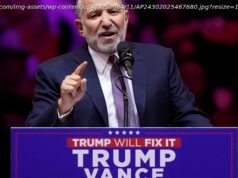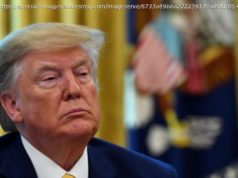With Wells Fargo & Co’s revenue slumping and no clear end in sight for sales scandal-related costs, analysts have pushed back predictions for when the bank’s closely watched efficiency ratio will return to pre-scandal levels.
(Reuters) – With Wells Fargo & Co’s ( WFC. N) revenue slumping and no clear end in sight for sales scandal-related costs, analysts have pushed back predictions for when the bank’s closely watched efficiency ratio will return to pre-scandal levels.
The fourth-largest U. S. bank booked hundreds of millions of dollars in fresh customer remediation and rebate costs in the second quarter, fueling worries about lingering scandal-related fallout.
Wall Street has been pressuring Wells Fargo to deliver more revenue to the bottom line for over two years. That ramped up once the bank landed in regulatory and reputational trouble over sales practices, and management responded with hard cost-cutting goals.
But Wells Fargo has faced more challenges since, with businesses like mortgage lending shrinking and the Federal Reserve imposing an asset cap until the bank proves governance and controls have improved.
It is also no longer receiving revenue from some products it missold as recently as last year, like add-on insurance.
As a result, analysts say it may take until 2020 for Wells Fargo to get its efficiency ratio within the 55 percent to 59 percent range Chief Executive Tim Sloan has pledged to hit. It has not reported a ratio below 60 percent since September 2016.
That metric, which measures the cost of one dollar of revenue, was 66.7 percent at Wells Fargo during the first half of the year. By comparison, JPMorgan Chase & Co’s ( JPM. N) efficiency ratio was 57.6 percent.
Two-thirds of the analysts who updated estimates since second-quarter results now see the ratio staying at or above 60 percent through 2019, according to Thomson Reuters data. Prior to earnings, the consensus for the ratio was 59.5 percent.
“It’s dragging on longer that what people originally expected,” said Edward Jones analyst Kyle Sanders, referencing costs associated with the bank’s past wrongdoings.
Sanders did not change estimates much after the second-quarter report but said his models were more conservative than other research houses.
Wells Fargo was once the most valuable bank in the world by market value, as investors rewarded the company for its perceived profitability and growth potential.
But revelations about millions of customers getting locked into unnecessary products has forced investors to rethink how they value the stock, which has lagged rivals since September 2016. ( tmsnrt.rs/2M6C0rP)
The bank pledged to shut 800 branches by 2020, and has cut 4,600 employees from its payroll since 2016. The efforts are part of Sloan’s goal to slash $4 billion from annual expenses by next year.
While executives reiterated that pledge in recent weeks, they have declined to provide a near-term efficiency ratio target.
Management initially expected to approach 59 percent by the end of 2018, but said in April actions to comply with the Fed’s consent order would delay progress.
Analysts say it could take more than a year to get there, given the business pressures and scandal costs.
“It’s not an outrageous target,” said Sanders, of Edward Jones. “They do have lot of levers to pull on in terms of squeezing costs out of the business.”






